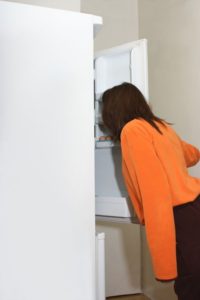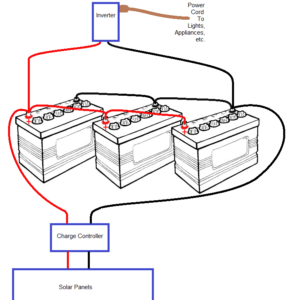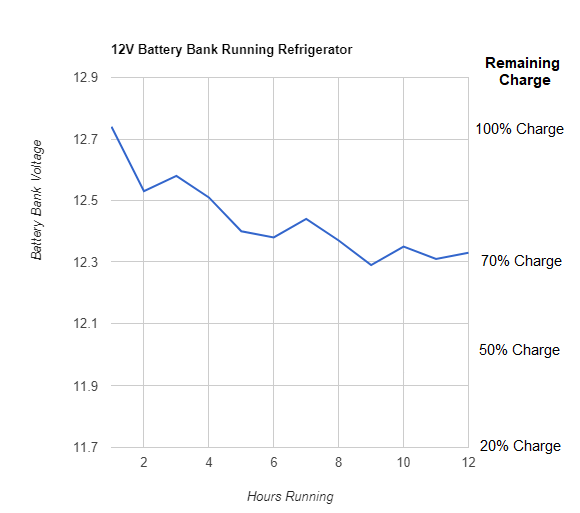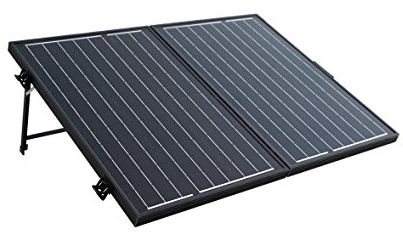 Consider an extreme situation where an electromagnetic pulse (EMP) or other disaster or attack closes down our nation’s electrical grid for weeks, months, or longer. After an EMP attack, it’s unlikely that our local medical service will continue with business as usual. Drug deliveries to our local pharmacies will stop because delivery trucks won’t run and drug manufacturers will be shut down. The pharmacies will soon run out of most medications. In addition to all the other problems such an event could cause, illnesses that are usually considered minor inconveniences, can become life-threatening situations.
Consider an extreme situation where an electromagnetic pulse (EMP) or other disaster or attack closes down our nation’s electrical grid for weeks, months, or longer. After an EMP attack, it’s unlikely that our local medical service will continue with business as usual. Drug deliveries to our local pharmacies will stop because delivery trucks won’t run and drug manufacturers will be shut down. The pharmacies will soon run out of most medications. In addition to all the other problems such an event could cause, illnesses that are usually considered minor inconveniences, can become life-threatening situations.
Plainly, you just cannot afford to risk becoming sick from eating leftover food that has not been kept refrigerated. Having electricity to run a refrigerator becomes, not a luxury, but a necessity to keep yourself and your family healthy. Plus, it’s nice to have some ice occasionally!
We ran an experiment recently at our home in Pocahontas, to learn if it’s feasible to have refrigeration in a long-term “no power” situation. We have two full-sized refrigerators in our home. One is an old model from the 1980’s. The other is an Energy Star compliant model from 2012.

We created a battery “bank” of three 12-volt Ever Start-Marine Maxx, Marine & RV batteries (about $110 each at Walmart), wired in parallel to create one long-life 12-volt battery. These are “deep cycle” batteries designed to repeatedly have their charge drawn down by up to 80%, then recharged. (Watch your battery charge, because drawing them down too low can damage them.)
We attached to the battery bank a 1000 watt “inverter” which converts the 12V DC battery power to 120V AC power our refrigerator needs. At the start of the test, our battery bank was fully charged to a level of 12.75 volts. Over time, as the batteries are used up, that voltage drops, so with a digital multimeter it’s easy to track the remaining battery charge over time as the energy is used up.
First we plugged our old 1980’s refrigerator into the inverter and switched the battery power on. Within seconds, the inverter sounded its alarm and cut power to the refrigerator. The old refrigerator just draws too much power for the inverter to handle. Then we plugged the modern Energy Star refrigerator into the inverter, and it ran just fine. (We plan to replace that old refrigerator soon, because new ones are so efficient, they pay for themselves in about 2 years of use, and after that they are putting money into your pocket, vs. paying the electric company cash to let you run an inefficient older model.)
So, with the refrigerator successfully running on battery power, the test begins. We recorded the refrigerator temperature and the battery level hourly for the next 12 hours.
After 12 hours running only on the three “car batteries”, the temperature inside the refrigerator remained right were it was set at the beginning: 40 degrees F.
After 12 hours, the battery bank charge dropped by just 30%! At that rate after 24 hours, on batteries with no recharging, we’d still have 40 percent of our battery charge left. That means there’s plenty of extra power to run some LED lighting in the house, to run a fan to cool us, and to recharge our AA and AAA batteries for our radio, flashlights, etc.

Soon we’ll do a second experiment, running the refrigerator on batteries only for 3 full days, with the batteries being recharged in the daytime using  our $195 portable solar panels*. Our first test, described above, makes it seem reasonable to expect that this second test will be successful, because in most cases, 12 hours is about all you’d need to run on batteries alone before the sun comes back out and provides the power to both run the refrigerator and recharge the batteries for the next night of use. A previous test we ran proved that the solar panels can recharge our depleted battery bank with just a few hours of sunlight.
our $195 portable solar panels*. Our first test, described above, makes it seem reasonable to expect that this second test will be successful, because in most cases, 12 hours is about all you’d need to run on batteries alone before the sun comes back out and provides the power to both run the refrigerator and recharge the batteries for the next night of use. A previous test we ran proved that the solar panels can recharge our depleted battery bank with just a few hours of sunlight.
But, you may ask, what do you do when you have a few days of overcast skies without sunshine. Here are some thoughts on that:
- Even on cloudy days, the solar panels still provide some power to recharge the batteries, though not nearly as much as on sunny days. So you may have to cut back on having the refrigerator powered day and night, but it can still be run several hours a day to keep things cool.
- Cloudy days and/or winter days mean less sun, meaning less heat in the atmosphere, so a well-insulated refrigerator can keep food cold, as long as it’s not opened, for a long time while the battery bank waits for a solar recharge. Research shows that duct-taping rigid foam insulation board around a refrigerator, covering sides, top, and doors (but not where air must circulate in back) can cut the refrigerator’s energy needs in half.
- Forty degrees is the ideal temperature for a refrigerator, but when solar power is low, you can always bump the fridge temperature setting up a bit. This will shorten the storage life of foods stored, but it will still be a lot better than leaving things out at room temperature while you wait for sunshine to provide full power again.
- You can supplement solar power with wind power or even a bicycle-like manually cranked generator.
- If bad comes to worse, you might lose some food if there’s just not enough power available to run the refrigerator for a few days, but on all the days you DO have power, you’ll be a lot better off than people who have NO refrigeration.
